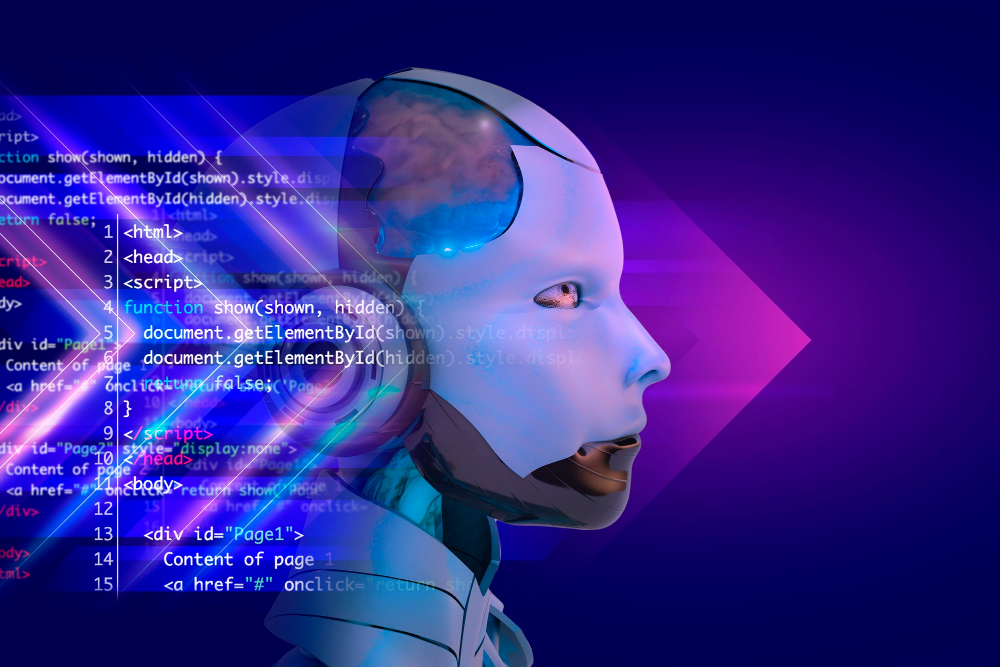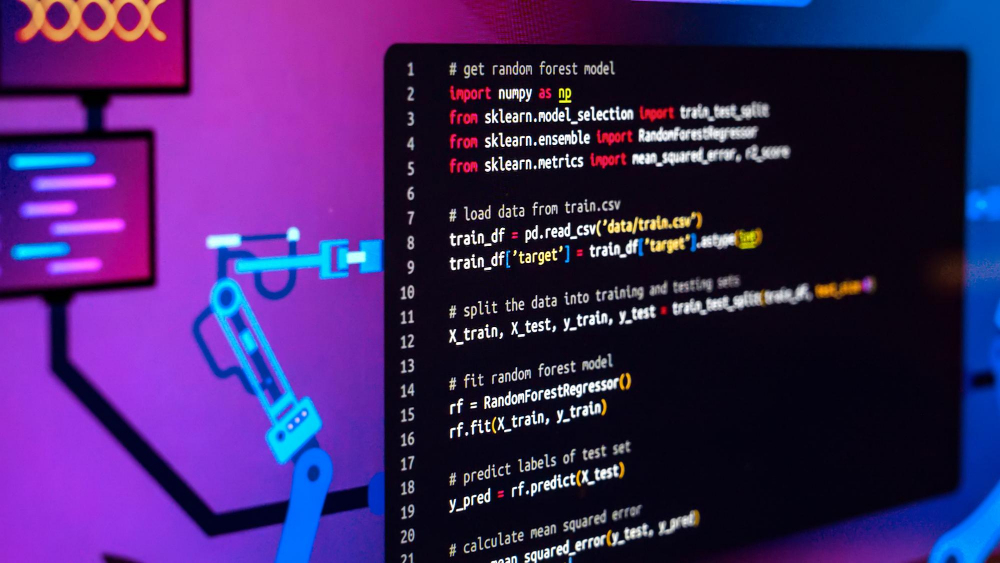Artificial Intelligence (AI) is changing the world, transforming how we work and live. Python, a robust programming language, is at the core of this shift.
It’s become a major force in AI. Through the Udacity AI course, you can explore the amazing world of AI. You’ll learn essential concepts and tools that will help shape the future.
Ever thought about why AI programming with Python is so exciting?
This guide dives into AI’s core components. You’ll look at machine learning, deep learning, and more.
You’ll have the skills to work on AI projects by the end. This preparation will prepare you as a leader in advancing AI.
Key Takeaways
- Gain a deep understanding of the fundamental concepts of Artificial Intelligence (AI)
- Master the art of Python programming and its pivotal role in the world of AI.
- Explore the power of machine learning, deep learning, and natural language processing.
- Learn how to design and implement neural networks for complex problem-solving
- Acquire the skills to apply AI concepts to real-world projects and drive innovation.
Introduction to AI Programming with Python

Start an exciting trip into the world of AI programming using Python. It is a key language in the AI field. You’ll learn basic AI principles. You’ll also see why Python shines in AI and data science.
What is Artificial Intelligence?
AI is about developing computers to do tasks that usually need human intelligence. This includes learning and solving problems. AI is changing many industries, from healthcare to transport. Knowing AI’s basics is crucial.
The Importance of Python in AI
Python is the go-to language for AI and data science. It stands out because of its strong libraries and easy-to-read code. With tools like TensorFlow and PyTorch, Python is great for making AI models.
Python’s simple syntax is perfect for both new and experienced programmers. People can dive into AI without worrying about complex code, which helps them focus on the fun part—AI programming.
Why Learn AI Programming with Udacity?
Udacity’s AI Programming with Python course is a deep learning experience.
You will become a skilled AI programmer. The course offers expert teaching, real projects, and a helpful community. It covers machine learning and cutting-edge AI topics.
By the end, you’ll know how to solve real AI problems. Plus, you’ll open doors to great AI job opportunities in the growing field.
Fundamentals of Python Programming
Learning Python programming is vital before diving into AI programming. This part teaches you the basics of Python and prepares you to write powerful, efficient code for your AI work.
Python Syntax and Data Structures
First up is Python’s syntax. You’ll get comfortable with how Python is written. This includes naming things, making decisions with if statements, and looping over things.
Next, you’ll look at important data structures. These are lists to hold many items, tuples for unchangeable orders, dictionaries for key-value pairs, and sets for unique elements. You’ll see how these boost your code.
Object-Oriented Programming in Python
After the basics, you step into object-oriented programming (OOP) in Python. This is a big part of writing advanced, organized programs. You’ll discover classes, methods, attributes, and inheritance, which are key to maintainable and scalable projects.
With a solid grasp of Python programming, you get set for higher AI and data science levels. This groundwork in syntax, structures, and OOP prepares you for serious coding work.
Natural Language Processing with Python

In this section, we explore Natural Language Processing (NLP). It’s a key part of artificial intelligence.
NLP lets computers understand human language. We’ll explore text preprocessing, tokenization, sentiment analysis, and topic modeling using Python.
Text Preprocessing and Tokenization
Before we can do powerful NLP,
we need to prepare our text correctly. That’s where text preprocessing comes in. We change the raw text to a format that machines get easily.
Tokenization is part of this. It turns text into smaller, useful bits, like words or sentences. Knowing this helps us start on advanced NLP tasks.
Sentiment Analysis and Topic Modeling
Next, we’ll focus on sentiment analysis and topic modeling. Sentiment analysis determines whether the text is positive, negative, or neutral. It’s useful in many areas, like checking how customers feel.
Then, there’s topic modeling.
It finds the main topics and their keywords in a group of documents. This skill is key for sorting data, summarizing, and finding relevant content.
You’ll also see how powerful Python is in this area. With the right libraries, Python is great for text analysis and NLP.
You’ll have the skills to work in the growing AI field by the end. You’ll be ready to face challenges in any industry.
Machine Learning Algorithms with Python
Machine learning is key in AI.
In this part, you’ll examine algorithms and techniques that drive machine learning. You’ll cover everything from supervised learning to unsupervised learning, including training models with data or finding patterns without it.
Supervised Learning Techniques
With supervised learning, you can teach models to address many issues. This ranges from predictive modeling to classification.
You’ll get good with algorithms like linear and logistic regression. Also, decision trees and support vector machines. This lets you create smart Python programs to forecast and choose from organized data.
Unsupervised Learning Techniques
However, unsupervised learning finds insights in big, unorganized data.
You’ll explore methods such as k-means clustering, principal component analysis, and anomaly detection. In your data science tasks, you’ll learn to spot trends, group data, and find odd data points.
Once you’ve got these skills down in Python, you’ll be ready for many real-world problems.
This includes predictive modeling and anomaly detection. You’ll stand out as someone who can handle multiple tasks in the machine-learning world.
Deep Learning Fundamentals
Deep learning is a key part of advanced AI. It explores concepts like artificial neural networks.
This includes convolutional neural networks (CNNs) for images and recurrent neural networks (RNNs) for sequences.
You’ll see how to use them with Python. They’ve changed areas like computer vision and how computers understand language.
Artificial Neural Networks
Artificial neural networks copy how our brains work. They’re a network of nodes that process data. By adding more layers, these models can understand complex data better. This helps solve many different kinds of problems accurately.
Convolutional Neural Networks
Convolutional neural networks (CNNs) are great for images and videos. They look for patterns in data. This has improved how computers see things. For instance, they’re used in face recognition and making art from photos.
Recurrent Neural Networks
Recurrent neural networks (RNNs) are good with sequences like text. They remember what they’ve seen before as they read more. This is useful for understanding languages, recognizing speech, and predicting future data.
Learning about and using these deep learning tools is key to solving AI challenges. These skills are essential for making computers understand vision and how we talk.
Udacity AI Programming with Python
This part will cover the Udacity AI Programming with Python course.
We will examine the course’s structure, syllabus, and teaching methods. You will see why the Udacity AI programming with Python course is so detailed and practical in teaching AI.
Udacity’s AI Programming with Python Course
Udacity’s Udacity AI programming with Python course is all about teaching you AI programming deeply. It starts from Python’s basics and leads to complex AI matters.
The course is set up this way to make learning smooth from start to finish.
Course Structure and Syllabus
The Udacity AI programming with Python course is well planned. It includes topics like natural language processing and machine learning. Each part connects to the next, making sure you learn in a logical order.
Project-based Learning Approach
In the city AI programming with Python course,
you’ll do a lot of projects. These hands-on tasks help you use AI in real life. This style of learning is very effective. It helps you get AI programming and prepare for field jobs.
Data Science with Python
Linking AI programming with data science is key. The section introduces data science in the Udacity AI Programming with Python course. It focuses on skills to turn raw data into insights. These insights improve AI decisions.
Data Manipulation and Visualization
Data science involves cleaning and manipulating data.
You’ll use NumPy and Pandas for this. It ensures your AI gets good data. You’ll also learn to represent data using Matplotlib and Seaborn visually. This makes complex data easy to grasp.
Statistical Analysis and Modeling
In this next step, you’ll tackle statistical analysis and modeling.
These are essential for drawing insights from data. You’ll use techniques like regression and hypothesis testing. They help find data patterns. This knowledge aids in making better AI models and decisions.
Deploying AI Models with Python
Your AI programming journey doesn’t stop at creating models. It extends to deploying and scaling your AI solutions for real-world use.
This part teaches you how to create web applications with the Flask framework in Python. It lets you share your AI models with users. You’ll also look into cloud deployment strategies.
These help you use cloud platforms to make your AI applications work smoothly for more users.
Building Web Applications with Flask
After creating your AI models with Python, the next step is to let users interact with them.
The Flask framework provides a simple way to do this for web applications.
With Flask, making user-friendly interfaces, managing data, and publishing your AI models online is easy. This allows people to use your new AI solutions.
Cloud Deployment and Scaling
When more users start using your AI applications, they must work well. Using cloud deployment services like AWS, Google Cloud, and Microsoft Azure can help.
These cloud services let your AI models handle more users easily and ensure that your AI solutions run smoothly, even when many people are using them.
Using cloud services also gives you access to more advanced cloud-based AI services. This can improve what your AI solutions can do.
| Deployment Approach | Advantages | Challenges |
|---|---|---|
| Flask-based Web Applications | Virtually limitless scalability Access to cloud-based AI services Reduced infrastructure maintenance. | Scalability limitations for high-traffic applications Potential performance bottlenecks Dependency on server infrastructure |
| Cloud Deployment and Scaling | Virtually limitless scalability Access to cloud-based AI services Reduced infrastructure maintenance | Potential vendor lock-in Cost optimization considerations Compliance and security requirements |
Ethical Considerations in AI
Artificial intelligence (AI) is taking big steps forward.
But as it grows, we need to think about its ethical side. This section looks at the main ethical issues related to AI. It covers topics like bias, fairness, privacy, and the need for new rules on how AI is used.
Bias and Fairness in AI Systems
AI can show bias by mistake.
This happens because of old data, how we make models, or picking the wrong data to learn from. The result is that some people or groups are treated poorly.
So, it’s up to AI makers to ensure that their AI acts fairly. They should use tests, consider many kinds of data, and always look for bias.
Privacy and Security Concerns
We must consider keeping our private info safe as we use AI more.
AI can access a lot of data about us, making us worry about hackers or our data being used in bad ways. Developing strong rules for how AI handles our data is key.
This will help keep AI safe and trusted.
AI Governance and Regulations
Dealing with AI’s ethics needs new rules and ways to control it. People from governments, companies, and those who think about right and wrong are all talking.
They are developing standards to ensure AI helps us all fairly. They want AI to work with our values, not against them.
Real-World Applications of AI

AI is more than just a concept; it’s changing how industries work. It’s used in healthcare, biotech, finance, banking, retail, and e-commerce. These areas are seeing big changes thanks to AI.
AI in Healthcare and Biotechnology
AI is making huge strides in health and biotech. It’s helping find new drugs and improve medical care. By analyzing lots of health and genetic data,
AI finds new ways to treat patients. It’s also great at spotting diseases early, making diagnoses better and quicker.
AI in Finance and Banking
Finance and banking use AI to manage risks,
fight fraud, and offer better investment options. AI sorts through loads of financial data, catching risky patterns and fraud. This protects businesses and customers.
It also makes banking better by giving tailored financial advice and making banking services smoother.
AI in Retail and E-commerce
Retail and e-commerce also benefit from AI.
E-commerce is making shopping experiences more personal with suggestions and streamlining the supply chain. It uses AI chatbots for instant help and to predict what products will be in demand.
AI Programming with Python: Best Practices
As you move forward in learning AI programming with Python,
using the best methods is key. These methods improve your code’s quality, efficiency, and ease of maintenance. You’ll look at ways to make your Python code better, boosting your performance.
This will make your AI programs work smoothly. You’ll also check out why version control and collaboration are important.
By using tools like Git and GitHub, you can handle your code better, work with others, and help the AI world grow.
Code Optimization and Performance Tuning
Writing Python code that’s efficient and performs well is vital, especially in AI and machine learning. You’ll learn how to improve your code,
including code profiling and managing memory well. This helps your AI apps work great, even with big data and tough calculations. By fixing performance issues, your AI will work at its best.
Version Control and Collaboration
Good teamwork and managing code are crucial in AI programming.
Discover the advantages of using version control systems like Git. It lets you keep track of changes, go back to old versions, and work smoothly with others.
Also, find out how to use GitHub to host your projects.
This is great for helping with open projects and being part of the wider AI and Python community. These skills boost your work and keep you updated with the latest in AI.
AI Programming with Python: Career Opportunities
Learning AI programming with Python at Udacity opens up many career paths. You can work as a machine learning engineer or a data scientist, among other roles. This course shows the job opportunities in AI and data science.
Job Roles in AI and Data Science
The need for AI is growing, leading to many job chances. Roles like machine learning engineer are important. They make and improve AI models.
Then, there are natural language processing specialists. They work on systems that understand and create human language.
Data scientists use data to find insights, which help them make important decisions. AI product managers play a key role, too. They connect the technology with business needs.
Building a Professional Portfolio
Having a strong portfolio is key in the AI and data science job market. It should highlight your top projects and include work from areas like machine learning and data visualization. This shows employers your problem-solving skills.
Continuous Learning and Upskilling
AI is always changing. To keep up, you should always be learning. Take online courses and stay updated on AI news. This helps you stay competitive in the dynamic AI world.
AI Programming with Python: Community and Resources
Starting your AI journey alone isn’t a must-do. Here, you’ll find the lively AI programming community. It’s filled with Python fans and AI geeks. Connect with other learners, experts, and pros in the field.
Online Forums and Discussion Groups
Get involved in online forums and discussion groups. Here, you can pose questions, swap insights, and work together on projects.
These sites allow you to talk with people who share your interests. You can learn, troubleshoot, and make friends in the AI programming community.
Blogs and Podcasts on AI and Python
Moreover, discover loads of resources, like blogs and podcasts.
They offer the newest updates, trends, and top practices in AI programming with Python.
Through these online guides, you’ll get deep insights, expert advice, and useful tips. Stay up-to-date and motivated on your AI programming route.
AI Programming with Python: Emerging Trends
The AI field is always growing, with new tech coming out fast. We’ll examine the latest trends in AI programming to see how the industry is changing.
Generative AI and Creative Applications
In the AI world, generative AI is a huge advancement.
It lets artists, musicians, and writers use AI to create new and creative content. Generative AI is behind art, music, and creative writing. It brings a whole new level of expression and storytelling.
Explainable AI and Interpretability
Complex AI systems are everywhere now, leading to a focus on explainable AI. This means AI should be able to explain clearly why it makes certain choices.
Making AI models more transparent and accountable helps build trust in them, which is key in fields like healthcare, finance, and policymaking.
AI at the Edge and the Internet of Things
AI and the Internet of Things (IoT) working together marks a new chapter in AI.
Edge AI means the AI is closer to where decisions are made, making actions quicker and more efficient. This duo is changing things in smart cities, farming, automation, and health care.
This peak into AI programming has shown us the following growth areas:
generative AI, explainable AI, and edge AI. These trends are creating new paths in AI. They offer chances for fresh ideas, creativity, and AI that are good for society.
Conclusion
You’ve just completed a deep dive into AI programming using Python at Udacity. You’ve learned everything from the basics to the advanced skills. This journey gave you a solid grasp of AI’s growing world.
Through Udacity’s hands-on projects, you get real-world practice. Now, you’re ready for the budding field of Udacity AI programming with Python. You have what it takes to keep exploring AI, create new tech, and land great jobs in this industry.
You now have rich knowledge to further your adventure in Udacity AI programming with Python.
You’re set to stretch the limits and shape the future of AI. Countless chances await you, and you’re poised to grab them all.
FAQ
What is Artificial Intelligence?
Artificial Intelligence (AI) is about making computers do things that need human-like intelligence. This includes learning, solving problems, making decisions, and understanding the world.
Why is Python important for AI programming?
Python is great for AI because it’s simple and easy to read. It also has many helpful tools for AI work, like TensorFlow and PyTorch.
What are the key benefits of learning AI programming with Udacity?
Udacity’s course lets you learn AI step-by-step. You get to work on real projects and join a supportive community. This helps you understand AI.
What are the fundamental concepts of Python programming covered in the course?
The course teaches you the very basics of Python. This includes how to write code, different types of data, and programming in an organized way.
How does the course address Natural Language Processing (NLP)?
The course goes deep into NLP, which is understanding and working with human language. You’ll learn how to prep text and analyze what it means and talks about.
What are the key machine learning algorithms covered in the course?
This course teaches you many ways computers can learn. It includes understanding supervised and unsupervised learning, such as predicting outcomes or finding patterns.
How does the course explore deep learning concepts?
The course covers the latest in AI and deep learning. You’ll delve into how computers can learn from data using structures like artificial neural networks.
What kind of project-based learning does the Udacity AI Programming with Python course offer?
The course is all about learning by doing. You will build AI applications for real situations. This helps you understand AI better and prepares you for the job.
How does the course address data science aspects of AI programming?
The course shows you crucial data skills using Python. You’ll learn to work with big data, visualize it, and draw useful conclusions.
What are the key considerations for deploying AI models in the real world?
The course also teaches you how to publish your AI work online. This includes making web apps and considering important issues like fairness and security.
What are some of the real-world applications of AI covered in the course?
You’ll learn about AI in many fields, from healthcare to finance. The course shows you how AI changes and creates new ways of doing things.
What are the best practices for AI programming with Python?
You’ll learn how to write great AI code. This includes making it run faster, keeping track of changes, and working well with others.
What career opportunities can the Udacity AI Programming with Python course open up?
Finishing the course opens many job doors in AI and data science. You could be a machine learning expert, a data scientist, or even manage AI projects.
How can the AI programming community and resources support my learning journey?
The course connects you with a big community of AI enthusiasts. You can talk with others, read blogs, and listen to podcasts to keep learning.
What are some of the emerging trends in AI programming with Python?
You’ll learn about the cool new things happening in AI. This includes making AI that’s creative, easy to understand, and fits into small devices and everyday things.




